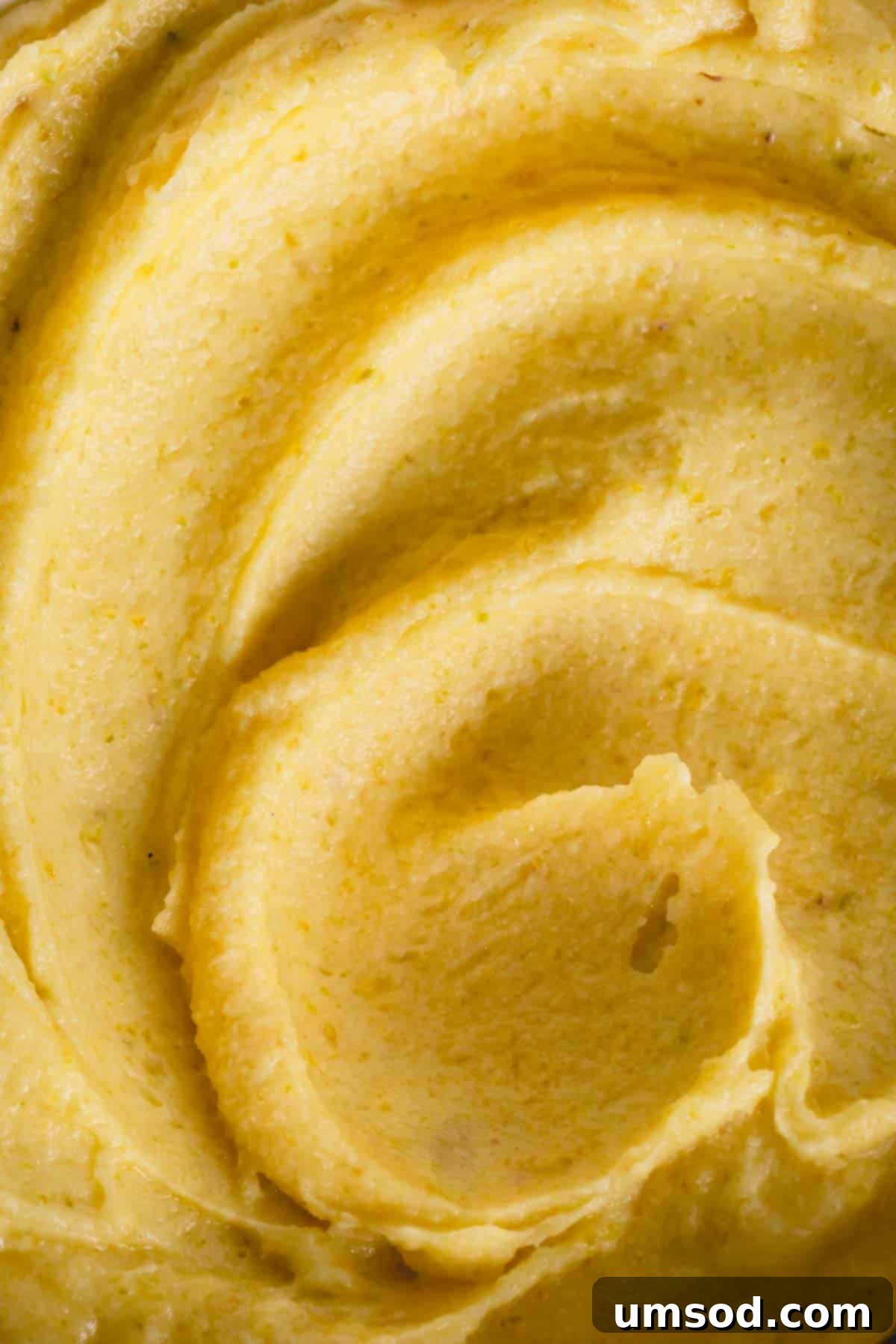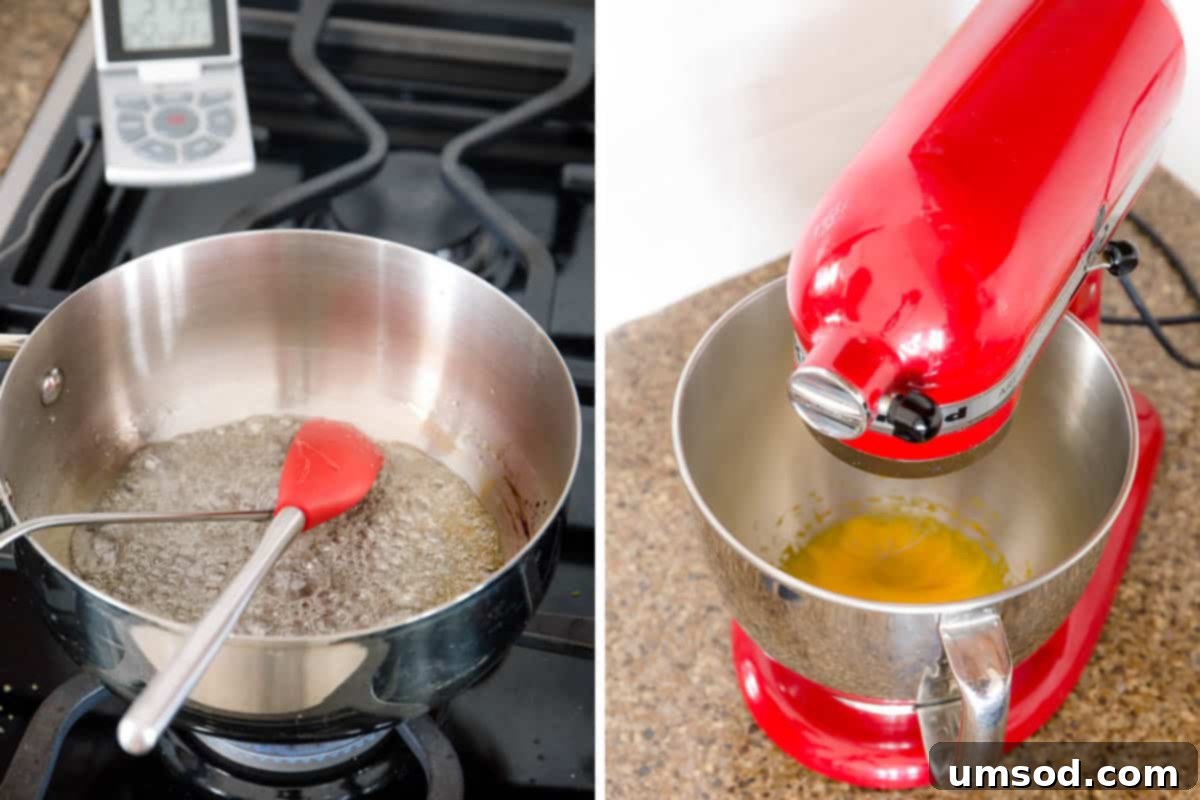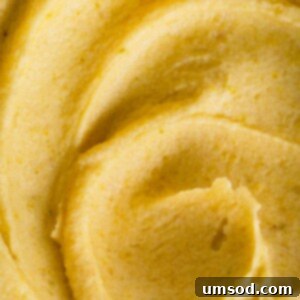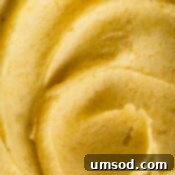Prepare to elevate your dessert game with this truly exceptional Pistachio Cream Filling. Imagine a filling that is not just smooth, but exquisitely silky, offering a luxurious mouthfeel that melts delicately on the tongue. This recipe delivers a subtly sweet, ultra-creamy consistency, infused with the rich, nutty essence of pistachios. While it’s the quintessential choice for filling delicate French macarons, its pipeable texture also makes it a dream for decorating cupcakes and frosting elegant layer cakes.

Luxurious Pistachio Cream Filling: A French Buttercream Masterpiece
In the vast world of buttercreams, French buttercream stands out as the epitome of richness and sophistication. It’s often hailed as American buttercream’s more refined, custardy, and exquisitely creamy cousin. Unlike its powdered-sugar-laden counterpart, French buttercream offers a delicate sweetness that allows the natural flavors, in this case, the irresistible nuttiness of pistachio, to truly shine.
This light, airy, yet profoundly rich and silky frosting derives its unique character from whipped egg yolks, creating a texture that is both indulgent and ethereal. The addition of high-quality pistachio paste transforms it into a flavor experience that is downright addicting, making it an instant favorite for anyone who appreciates gourmet desserts.
Not only does this pistachio cream filling taste absolutely fabulous in a variety of confections, but its robust yet pliable structure makes it incredibly versatile. It’s perfectly suited for delicate French macarons, providing stability without being overly heavy. It’s also sturdy enough to pipe intricate designs onto vanilla cupcakes or to elegantly frost a multi-layered cake. While it requires a slightly more advanced technique involving a hot sugar syrup, don’t let this detail intimidate you. The process, though a bit trickier than traditional buttercreams, becomes straightforward with practice and is undeniably worth the effort for the superior results it yields.
Why You’ll Fall in Love with This Pistachio French Buttercream Recipe
There are countless reasons why this particular pistachio cream filling will quickly become a cherished recipe in your baking repertoire. It’s more than just a frosting; it’s an experience. Here’s why it stands apart:
- Unrivaled Texture: Say goodbye to grainy or overly stiff frostings. French buttercream is renowned for its incredibly light, silky-smooth, and almost mousse-like texture. It glides effortlessly, providing a luxurious contrast to crispy macaron shells or tender cake layers.
- Subtle Sweetness: Many buttercreams overwhelm the palate with sugar. This recipe embraces a sophisticated, understated sweetness that allows the natural, earthy notes of the pistachios to take center stage. It’s a harmonious balance that truly elevates your desserts.
- Rich, Custardy Flavor: The base of whipped egg yolks gives French buttercream its signature custardy depth and a lovely pale yellow hue, adding an extra dimension of richness that other buttercreams simply can’t replicate. When combined with pistachio, it creates an indulgent, sophisticated profile.
- Intense Pistachio Flavor: By incorporating pure pistachio paste, we achieve an authentic, deep pistachio flavor that artificial extracts can’t match. It’s nutty, slightly sweet, and utterly captivating.
- Exceptional Versatility: Whether you’re a macaron enthusiast, a cupcake decorator, or a tiered cake artist, this filling is your secret weapon. It holds its shape beautifully for piping yet remains wonderfully creamy to eat.
- A Rewarding Challenge: While it involves a hot sugar syrup, mastering this technique is incredibly rewarding. It’s a skill that will open doors to a myriad of other classic French patisserie creations. The result is a truly homemade, high-end product that impresses every time.
The Distinction: French vs. Swiss vs. Italian Buttercream
Understanding the nuances between different meringue-based buttercreams is key to appreciating the unique qualities of French buttercream. While all three are lighter and less sweet than American buttercream, their base and preparation methods vary significantly:
- Swiss Meringue Buttercream (SMB): This popular buttercream starts by gently heating egg whites and granulated sugar over a double boiler until the sugar dissolves. The mixture is then whipped into a stiff, glossy meringue before softened butter is gradually incorporated. SMB is known for its stability, smooth texture, and bright white color, making it excellent for piping and decorating.
- Italian Meringue Buttercream (IMBC): Considered by many to be the most stable of the meringue buttercreams, IMBC involves pouring a hot sugar syrup (cooked to the soft ball stage) into whipping egg whites. The egg whites continue to whip until the meringue is cool, stiff, and glossy, after which butter is added. IMBC is exceptionally smooth, pipeable, and holds up well in warmer temperatures. It’s often favored for wedding cakes and intricate designs due to its robustness.
- French Buttercream (FBC): Our star today! Unlike Swiss and Italian buttercreams which use egg whites, French buttercream is uniquely crafted with whipped egg yolks. A hot sugar syrup is cooked separately and then slowly drizzled into the rapidly whipping egg yolks. The mixture continues to beat until it cools and becomes light, voluminous, and pale. Finally, softened butter is incorporated. This egg yolk base gives French buttercream its characteristic rich, custardy flavor and a beautiful light yellow hue. It’s slightly less stable than its meringue counterparts but offers an unparalleled richness and silky texture, making it a truly decadent filling.
In summary, while Swiss and Italian buttercreams rely on the structure of egg whites, French buttercream’s foundation of egg yolks yields a distinctively richer, more custardy taste and a beautiful, natural yellow color, setting it apart as a true indulgence.
Essential Ingredients for Perfect Pistachio Cream
Crafting this exquisite pistachio cream filling begins with understanding the role each ingredient plays. Quality matters, and the right consistency for each component is crucial for success:
- Granulated Sugar: This recipe uses granulated sugar to create a hot sugar syrup, which is fundamental to French buttercream. Don’t be tempted to substitute with powdered sugar; it’s not needed here! The 1/3 cup measurement is not a typo; French buttercream is designed to be subtly sweet, allowing other flavors (like pistachio) to shine, distinguishing it from the often overpoweringly sweet American buttercream.
- Water: A small amount of water is essential for creating the sugar syrup. It hydrates the sugar, allowing it to dissolve and cook evenly to the precise temperature without crystallizing or immediately turning into caramel. This ensures a smooth, stable syrup.
- Egg Yolks: The heart and soul of French buttercream! Whipped egg yolks form the luxurious, creamy base, giving this frosting its signature richness, beautiful light yellow color, and unparalleled silky texture. Ensure your egg yolks are at room temperature, as this helps them whip up to their maximum volume and incorporate smoothly with the hot syrup.
- Unsalted Butter: It’s absolutely paramount to use high-quality, unsalted butter, and it must be at the correct consistency: softened, but not melted. Butter that is too cold will result in a curdled, lumpy frosting, while melted butter will turn your beautiful cream into a soupy mess. Room temperature butter (soft enough to indent easily with a finger but still cool to the touch) is the key to a perfectly smooth emulsion.
- Pistachio Paste: This is where the magic happens! For the most authentic and intense pistachio flavor, I wholeheartedly recommend making your own homemade pistachio paste. It’s surprisingly simple and yields a superior flavor and vibrant color compared to many store-bought varieties. If homemade isn’t an option, high-quality pure pistachio paste can be found at specialty food stores or online retailers like Amazon. Opt for pure paste without added sugars or oils for the best results.
Step-by-Step Guide: Crafting Your Pistachio Cream Filling
Creating this rich, luxuriously creamy pistachio filling is a rewarding process that, with careful attention to detail, is entirely achievable. Follow these steps for a perfect result:
- 1. Prepare the Sugar Syrup: In a small, heavy-bottomed saucepan, combine the granulated sugar and water. Place the saucepan over medium heat and stir constantly until the sugar completely dissolves. Once dissolved, stop stirring and bring the mixture to a boil. Insert a candy thermometer and continue to cook the syrup without stirring until it reaches precisely 250 degrees Fahrenheit (120 degrees Celsius). This stage, known as the firm ball stage, is crucial for the buttercream’s structure.
- 2. Whip the Egg Yolks: As the sugar syrup cooks, simultaneously begin beating your room-temperature egg yolks. Place them in the bowl of a stand mixer fitted with the whisk attachment. Beat on medium-high speed until the egg yolks have significantly increased in volume (doubled in size) and have lightened considerably in color, becoming pale yellow. This process takes about 2-3 minutes.

- 3. Incorporate the Hot Syrup: Once the sugar syrup reaches 250°F, immediately remove it from the heat. With your stand mixer running on its lowest speed, very slowly and carefully pour the hot sugar syrup into the beating egg yolks. Direct the stream of syrup towards the edge of the bowl, allowing it to drizzle down the side rather than hitting the whisk directly. This prevents splattering and ensures the syrup incorporates smoothly without hardening prematurely into rock candy.
- 4. Cool and Beat: After all the sugar syrup has been added, increase the mixer speed to medium-high. Continue to beat the mixture vigorously until it cools down to approximately 104 degrees Fahrenheit (40 degrees Celsius), or until the bowl feels cool to the touch from the outside. During this beating time (which can take 5-10 minutes), the mixture will transform into a silky smooth, voluminous, and significantly whiter consistency, almost like a fluffy sabayon.

- 5. Add the Butter: Reduce the mixer speed to low. Begin adding the softened unsalted butter, one tablespoon at a time. Allow each piece of butter to fully incorporate into the mixture before adding the next. This gradual addition is key to creating a stable emulsion and preventing a curdled texture. Continue until all the butter is incorporated and the buttercream starts to come together smoothly.
- 6. Flavor with Pistachio: Once all the butter is added and the buttercream looks uniform, add the pure pistachio paste. If you desire a more vibrant green color, you can also add a tiny drop or two of green food coloring at this stage. Increase the mixer speed to medium and beat until the pistachio paste is fully incorporated, and the cream is perfectly smooth, luscious, and uniformly colored.
Expert Tips and Troubleshooting for Flawless French Buttercream
French buttercream, while rewarding, can be a bit sensitive. Here are some expert tips and troubleshooting advice to ensure your pistachio cream filling turns out perfectly every time:
- Batch Size Matters: This particular recipe is designed for a small batch, yielding approximately one cup, which is ideal for filling a batch of macarons. If you plan to use it for frosting a dozen cupcakes or a small layer cake, it is highly recommended to double the recipe.
- Precision with Temperature: A candy thermometer is your best friend! You absolutely must accurately measure the temperature of the sugar syrup. If the syrup isn’t cooked long enough (below 245°F), the pistachio buttercream won’t achieve the correct consistency and may remain too soft or soupy. Cook it too long (above 250°F), and the sugar will become too hard, potentially forming rock sugar in your buttercream. Aim for the firm ball stage, precisely between 245-250 degrees F (118-121°C), and do not exceed this range.
- Strategic Mixer Placement: To simplify the process, position your stand mixer close to your stovetop. This allows you to simultaneously monitor the sugar syrup and whip the egg yolks, optimizing your timing and efficiency.
- The Right Tool for the Job: For French buttercream, a stand mixer is almost indispensable. Attempting this recipe with a hand mixer is considerably more challenging because you need to pour the hot sugar syrup into the egg yolks slowly and continuously *while* the mixer is running. A stand mixer provides the necessary hands-free operation.
- Pouring Technique is Key: When adding the hot sugar syrup to the egg yolks, pour it in a very thin, steady stream against the side of the mixing bowl. Avoid pouring directly onto the whisk, as this can cause the hot sugar to splatter, harden instantly, and form undesirable sugar crystals or “rock candy” in your buttercream.
- Butter Consistency: Your unsalted butter must be at true room temperature – soft enough to leave an impression when pressed, but still cool and firm, not melting or greasy. If the butter is too soft (liquefied in parts), the emulsion might break, resulting in a soupy buttercream that won’t set properly.
- Temperature Control Post-Syrup: This is critical! Ensure the whipped egg yolk and sugar syrup mixture has cooled down sufficiently (to around 104°F or when the bowl feels cool) before you begin adding the butter. Adding butter to a warm mixture will inevitably cause the butter to melt, leading to a soupy consistency instead of a fluffy frosting. Be patient during this cooling stage.
- Troubleshooting: What if my buttercream is too runny/soupy? This usually happens if the butter was too soft or the egg yolk mixture was too warm. You can try chilling the entire bowl in the refrigerator for 15-20 minutes, then re-whipping it on medium speed. Repeat if necessary, until it thickens.
- Troubleshooting: What if my buttercream is curdled? If it looks curdled or broken, it’s often because the butter was too cold, or added too quickly. Continue beating on medium speed for several minutes. The friction from the whisk can sometimes warm it slightly and bring it back together. If it’s still curdled, gently warm a small portion over a double boiler for a few seconds (don’t melt!) and then slowly add it back to the main mixture while beating. Alternatively, chill and then re-whip.

Storing and Serving Your Pistachio Cream Filling
Proper storage is essential to maintain the quality and safety of your homemade pistachio cream filling. Its rich texture also means it benefits from specific handling when being prepared for use after storage.
- Storage Guidelines: Due to its egg yolk and butter base, pistachio buttercream should not be left at room temperature for extended periods. It can safely sit out for up to 2 hours. For longer storage, transfer the filling to an airtight container and refrigerate it for up to one week.
- Freezing Instructions: For longer preservation, this buttercream freezes beautifully. Place it in an airtight, freezer-safe container and freeze for up to 3 months.
- Best Practices for Re-Use: When ready to use chilled or frozen buttercream, first thaw it completely in the refrigerator overnight. Before using, it will likely be quite firm. Transfer it to the bowl of your stand mixer and re-whip it on medium speed until it returns to a smooth, soft, and pipeable consistency. This re-whipping step is crucial for restoring its luxurious texture.
Frequently Asked Questions About Pistachio French Buttercream
French buttercream is a luxurious, meringue-style frosting distinguished by its base of whipped egg yolks, butter, and a hot sugar syrup. The hot syrup is slowly drizzled into rapidly beating egg yolks, creating a light, fluffy, and custardy mixture before softened butter is gradually incorporated to achieve its signature silky-smooth texture and rich flavor.
Pure pistachio paste offers a naturally sweet, earthy, and intensely nutty flavor profile. It has a smooth, creamy consistency and a characteristic light green hue. It’s made simply from finely ground pistachios. Some commercial “pistachio creams” may have added sugar or other ingredients, but pure paste highlights the natural essence of the nut.
Pistachio paste is incredibly versatile and can infuse a delightful nutty flavor into a wide range of desserts. Beyond cakes, fillings, and frostings, try it in homemade ice cream, incorporate it into macaron shells or fillings, blend it into chocolate cake batter, add it to cookie dough, or use it as a flavorful base for tarts. It also makes a fantastic, elegant spread for toast, crepes, or pancakes.
The Ultimate Pistachio Cream Filling Recipe

Pistachio Cream Filling
By Shinee Davaakhuu
This pistachio cream filling is the epitome of dessert luxury: silky smooth, subtly sweet, and wonderfully creamy. It’s the perfect choice for exquisite French macarons, but its delightful texture also makes it ideal for piping onto cupcakes or frosting a decadent layer cake.
Prep time: 10 minutes | Cook time: 20 minutes | Total time: 30 minutes | Yields: Approximately 1 cup
Ingredients
- 1/3 cup (65g) granulated sugar
- 2 tablespoons (30ml) water
- 2 large egg yolks, at room temperature
- 2 oz (55g) unsalted butter, softened (see Note 1)
- 3 teaspoons (20g) pure pistachio paste (homemade version recommended)
Equipment
- Stand mixer with whisk attachment
- Small saucepan
- Candy thermometer
Instructions
- Prepare Sugar Syrup: In a small saucepan, combine the granulated sugar and water. Bring the mixture to a boil over medium heat, stirring constantly until the sugar is completely dissolved. Stop stirring and continue to cook until the syrup reaches precisely 250°F (120°C) on a candy thermometer, which typically takes about 5 minutes.
- Whip Egg Yolks: Simultaneously, in the bowl of a stand mixer fitted with the whisk attachment, beat the egg yolks on medium-high speed until they have doubled in size and turned pale yellow, approximately 2 minutes.
- Add Hot Syrup: With the mixer running on low speed, slowly and carefully pour the hot sugar syrup into the egg yolks. Aim the syrup towards the side of the bowl to avoid hitting the whisk and causing splatters or crystallization.
- Cool and Beat: Increase the mixer speed to medium-high and continue to beat the mixture until it cools down to 104°F (40°C), or until the mixing bowl feels cool to the touch. The mixture will become significantly smoother, whiter, and more voluminous.
- Stir in Butter: Reduce the mixer speed to low. Add the softened unsalted butter, one tablespoon at a time, allowing each addition to fully incorporate before adding the next.
- Add Pistachio Paste: Finally, add the pure pistachio paste. If desired, you can also add a small amount of green food coloring for a more intense hue. Beat on medium speed until the cream is perfectly smooth, uniformly colored, and well combined.
Tips & Notes
- Note 1: Butter Consistency: It is crucial that your butter is truly softened to room temperature, but absolutely NOT melted. If the butter is too soft or liquidy, the buttercream will not set properly and may become soupy.
- Storing Tips:
- To Store: Freshly made pistachio buttercream can be kept at room temperature for up to 2 hours. For longer storage, transfer it to an airtight container and refrigerate for up to one week.
- To Freeze: This buttercream can be frozen in an airtight container for up to 3 months. Thaw overnight in the refrigerator before use.
- Re-whipping: Always re-whip chilled or thawed buttercream in a stand mixer until it is soft and pipeable again before using.
Nutrition Information (Approximate values for the entire recipe)
- Calories: 1299 kcal
- Carbohydrates: 74g
- Protein: 11g
- Fat: 111g
- Sugar: 68g
- Sodium: 829mg
Course: Filling | Cuisine: American

Did you create this delectable filling? We’d love to hear your feedback! Please consider leaving a review to share your experience.
Explore More Pistachio Delights
If you’re a fan of the unique flavor of pistachio, be sure to explore these other fantastic recipes:
- Cranberry Pistachio Biscotti
- Easy Pistachio Buttercream
- Pistachio Eclairs
